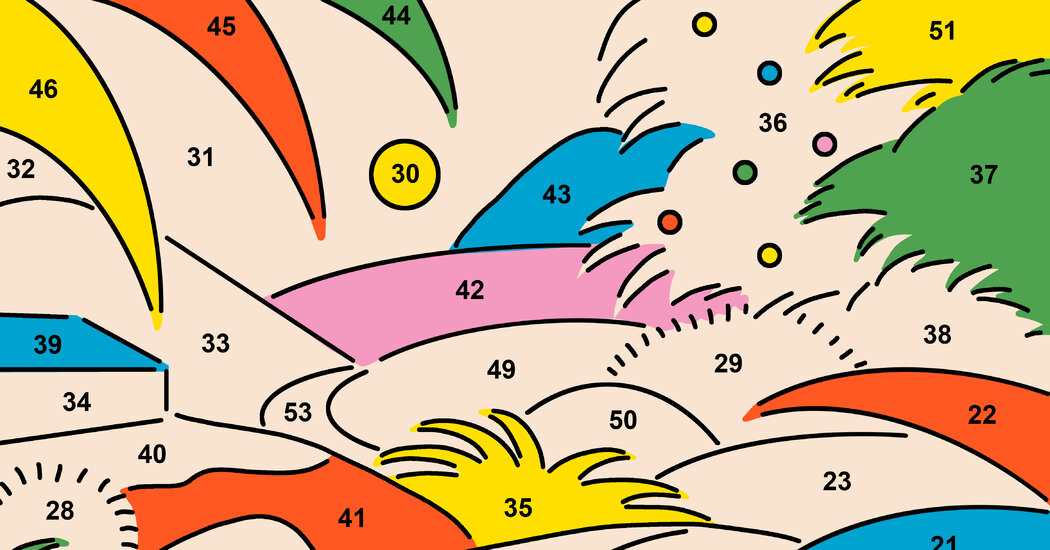In 2009, the botanist Naomi Fraga was hunting a flower without a name near Carson City, Nev. Ms. Fraga saw that the plant was going extinct in real time as its desert valley habitat was bulldozed to make way for Walmarts and housing developments. But in order to seek legal protections for it, she had to give it a name.
The diminutive yellow flower became the Carson Valley monkeyflower or, officially, Erythranthe carsonensis, allowing conservationists to petition the U.S. Fish and Wildlife Service to safeguard it under the Endangered Species Act. If their petition is approved, the flower will go from unknown to critically important in less than a generation, at least as far as Western science is concerned.
Taxonomy, the science of naming and classifying organisms, is the foundation for conserving disappearing plants and animals. Yet the field — often viewed as an archaic, dusty tradition that harks back to intrepid 19th-century botanists describing the plants of newly colonized lands — is dying. Several decades after the taxonomic frenzy of 1830 to 1920, when Western scientists went deep into far-flung regions of the world, molecular genetics revolutionized our ability to classify species, and began vacuuming up funding while the analog field of taxonomy was left to languish.
With genetic sequences, we can now identify the fundamental building blocks of life, but we need to be able to interpret genetic data in a way that humans can understand and use. That’s taxonomy’s job. And if we want to save what’s left of the vast diversity of life on Earth, we’ll have to reinvest in this science. How we delineate between species determines what we choose to save.
The dire state of taxonomy in the United States might be best illustrated by the Flora of North America, the definitive 30-volume attempt to name and describe every plant species here and in Canada. The project began in the 1980s, but it still hasn’t been completed because its contributors have struggled to secure consistent funding. By the time the last volume is completed in 2026, it will have to be revised immediately. For instance, its first volume, on ferns, released in 1993, is utterly out of date as new species have been discovered and nonnative species have moved in. Imagine trying to understand a 2024 Camry with a manual from 1993. That’s what botanists and conservationists trying to maintain biodiversity are working with.
The Flora of North America has been the victim of a broad shift in our scientific priorities as a nation. The National Science Foundation is the main funder of American botany. But since the 1980s and 1990s, its funding has increasingly gone to hypothesis-driven, laboratory-based research. When the Flora’s contributors ask university botanists to work on the project, it often must be done pro bono.
Much of the work of taxonomy is done in herbariums, collections of dried plant specimens that serve as a library and are typically housed at universities and botanical gardens. In fact, many of the species left to discover are probably already hiding in herbariums as unnamed specimens. But even the herbariums are now losing funding; Duke University recently pulled support for its collection, one of the country’s biggest, saying it was too costly to maintain.
I see this and other evidence of taxonomy’s slow death as a tragedy. I’m in a graduate program for botany at the University of Vermont, and the act of naming a plant has always felt like a sort of interspecies intimacy. Though my university’s herbarium is still well funded, it feels as if the basic work of plant identification is being left behind as grant money and students flow to flashier fields in biology. Fewer and fewer plant biology students know how to identify the plants in their own woods.
The consequences of allowing taxonomy to falter are significant. Every year, botanists around the world discover around 2,000 new plants, a number that has held fairly steady since 1995, suggesting that there are still tens of thousands of plants to introduce to science. Three-fourths of the new species are already threatened with extinction. If we don’t have taxonomists to describe these species, we stand little chance of saving them — or their habitat.
And governments and conservation groups are more likely to act when exciting species are discovered. In the mid-1990s, for example, after the botanist John Clark and colleagues discovered a number of rare species in western Ecuador, the government created an ecological reserve half the size of Great Smoky Mountains National Park. In 1992, botanists discovered and named eight plants just outside of Birmingham, Ala. The area is now protected by the Nature Conservancy.
Taxonomy also could save lives and influence what we eat. There are an estimated 8.7 million species of plants and animals. We’ve described just 1.2 million of them. Which among those still to be named have undiscovered curative or other properties that might change the course of medicine or nutrition?
With the threats of climate change, nuclear war and artificial intelligence bearing down, the act of simply itemizing our plants can seem trivial. But when I asked Art Gilman, a botanist, taxonomist and author of “The New Flora of Vermont,” why it matters, he paused in the careful way of a scientist. He gave no answer about curing cancer or revolutionizing food systems. “We lose the opportunity to know our world,” he said, finally.
